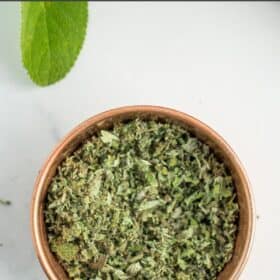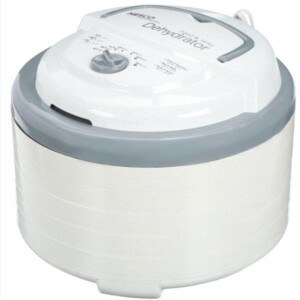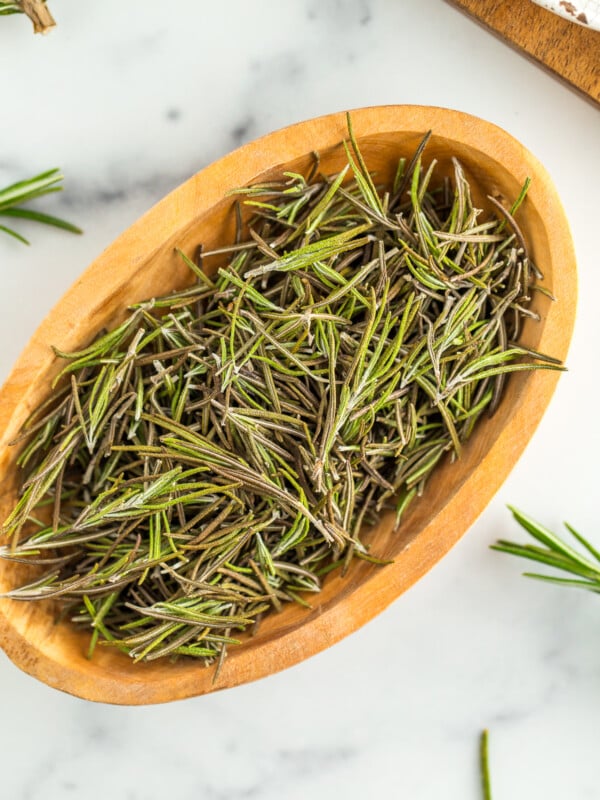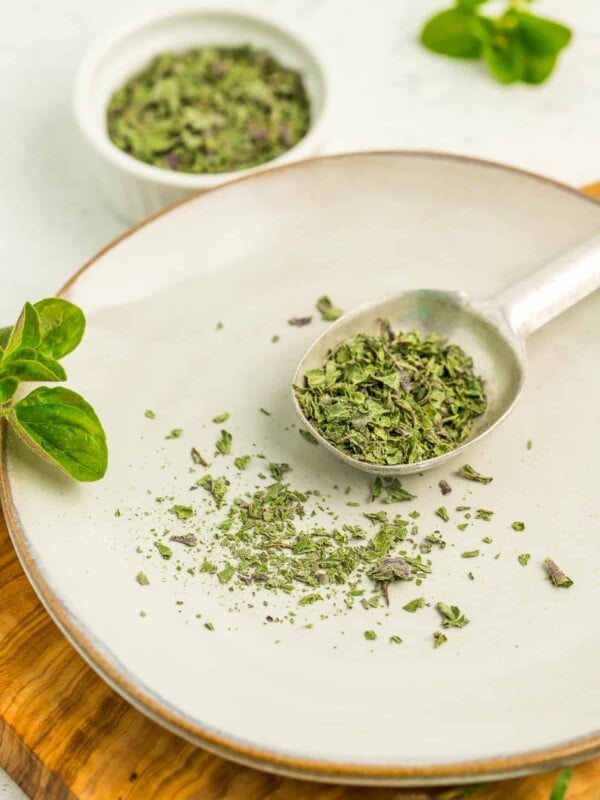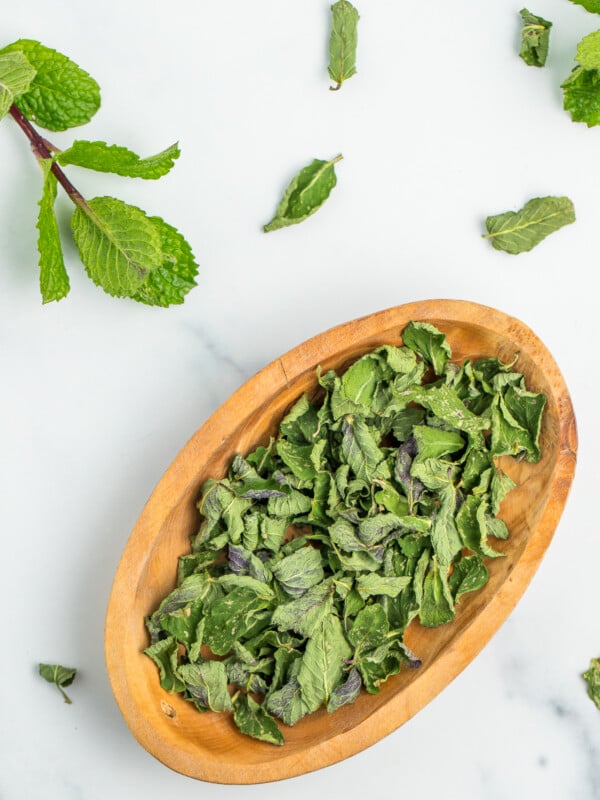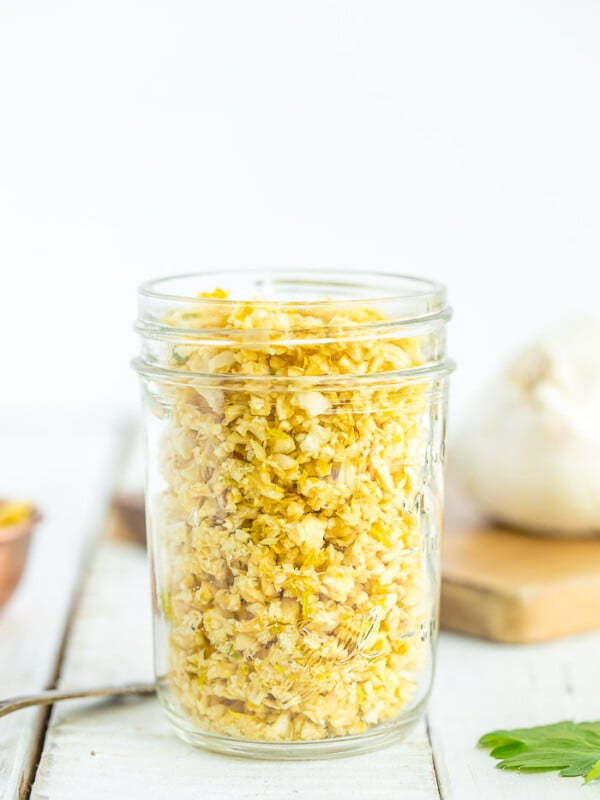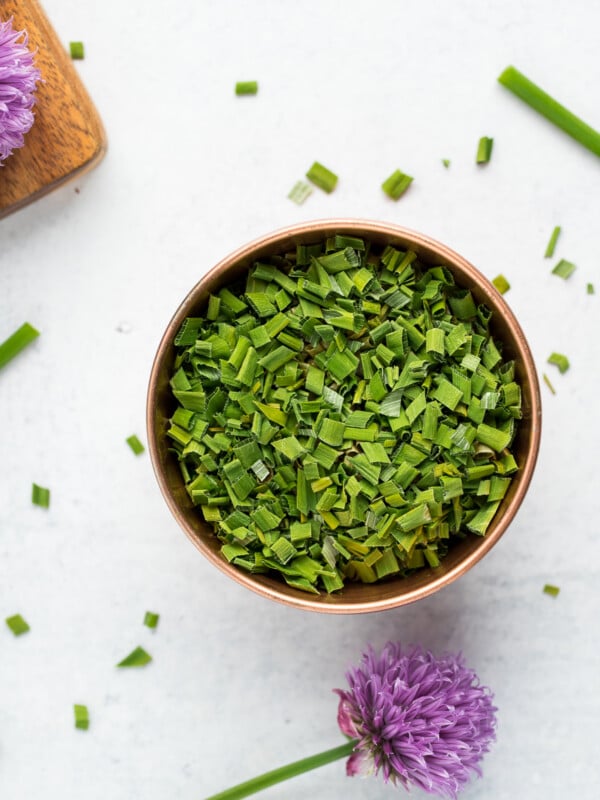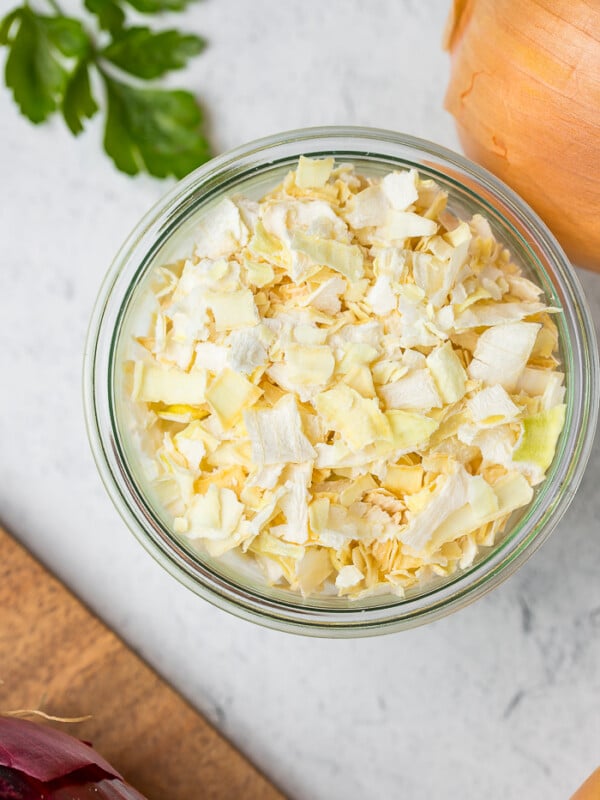As an Amazon Associate, I earn from qualifying purchases.
Learn how to dry sage four ways – in a food dehydrator, in the oven, in the microwave, or air drying. Drying sage is a simple way to preserve this delicious pantry staple!
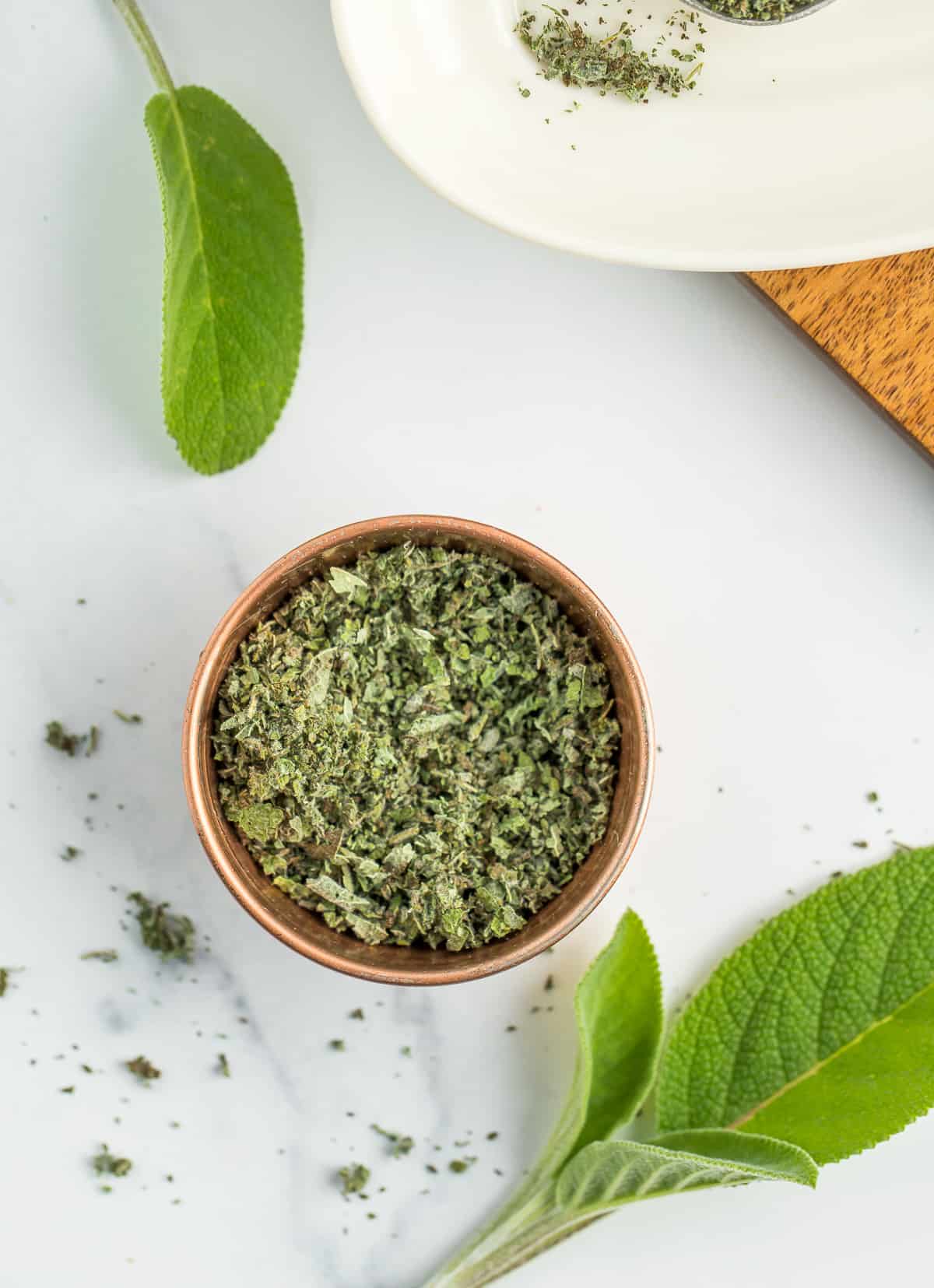
Dried sage is a delicious and versatile herb for home cooks. Sage is also incredibly easy to grow in a home garden. In most growing zones, you can plant it once and it will come back year after year.
Drying your own sage is both easy and affordable, and I’ll show you how.
From this easy sausage stuffing to spicy butternut squash soup to homemade breakfast sausage, to hasselback butternut squash to Instant Pot stuffing, sage packs so much flavor into lots of fantastic dishes.
HOW DO YOU DRY FRESH Sage?
There are four methods you can use to dehydrate fresh sage – the dehydrator, the oven, air drying, and the microwave.
I’ll walk you through each of the options in the printable recipe card at the bottom of the post.
WHAT IS THE BEST WAY TO DRY FRESH Sage?
Between you and me, my preference is always to use my dehydrator. It’s energy-efficient, I can dry a lot at once, and I know it will consistently dry my herbs.
But, if you live in a warm place with limited humidity, hanging sage to try is also super simple.
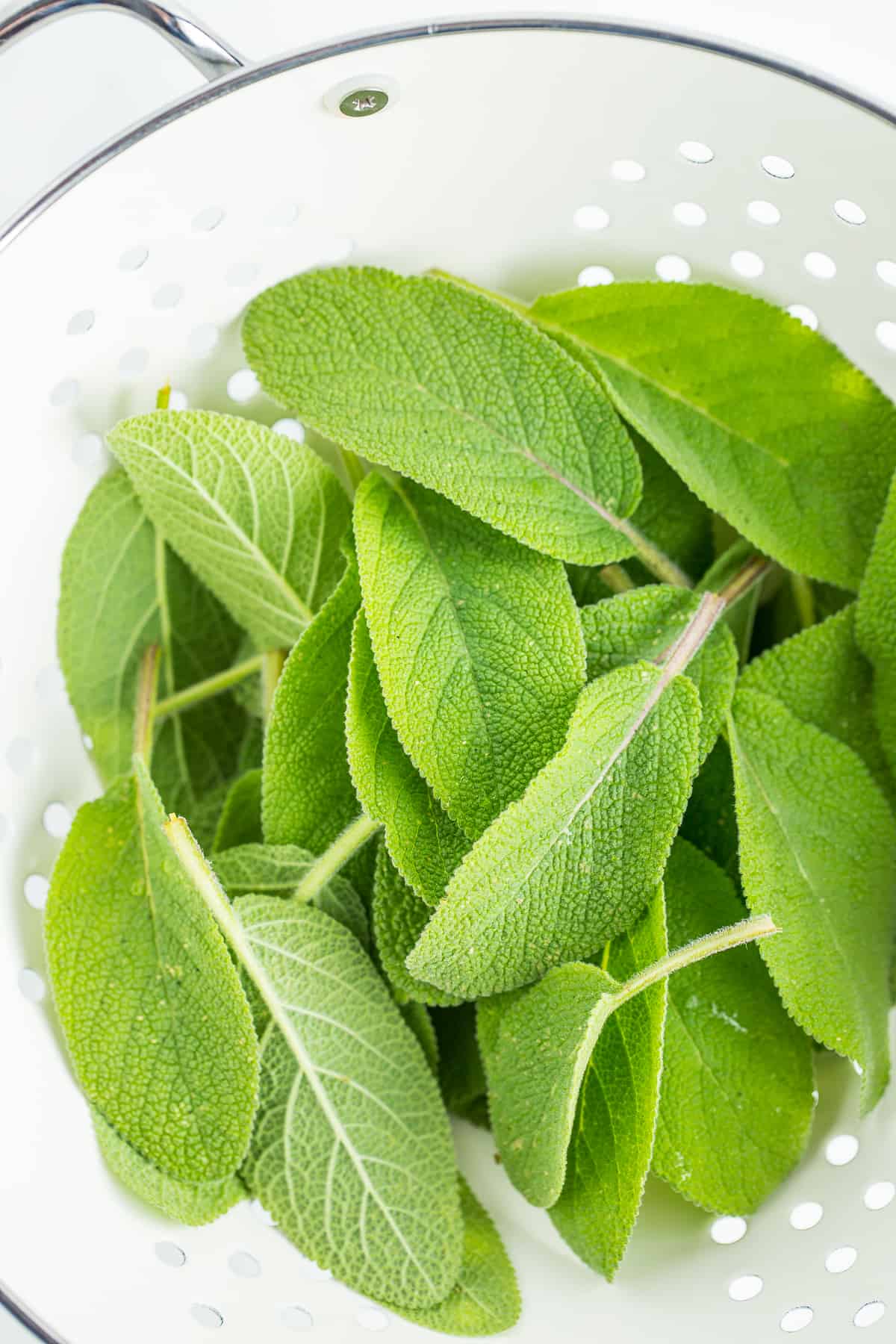
SHOULD Sage BE WASHED BEFORE DRYING?
Yes, absolutely! Especially if it is coming in fresh from the garden! The underside of sage leaves are magnets for dirt and small bugs.
Rinse the leaves in a bowl of cool clean water and shake to dry. I prefer to allow the leaves to fully dry before starting the actual dehydrating process.
HOW LONG DOES IT TAKE TO DRY FRESH Sage?
Drying conditions and method will determine the total drying time, but on average, it takes 20-24 hours in the dehydrator.
I have owned this dehydrator for at least a dozen years, and it has held up beautifully. I’ve added additional trays over the years and it is a workhorse in summer and fall.
I can dehydrate rosemary, dehydrate garlic, dry peaches, dehydrate basil, dry oregano, dehydrate mint, dehydrate marshmallows, dry limes, dry chives, dehydrate tomatoes, dry pears, dehydrate onions, and dehydrate apples in a flash.
That’s what is called a preserving win. (Things cool kids say).
How Long Does it Take to Air Dry Sage?
The overall time for air drying sage will vary depending on conditions. In a warm location with low humidity, it can take 1-5 days.
HOW TO STORE DRIED Sage
As long as it is stored in a cool and dry place, your dehydrated sage will be good for a year.
Make sure the dried sage is fully cooled before putting it into an air-tight container. As the leaves cool they will release heat that could result in condensation and eventually cause it to mold.
FOUR WAYS TO DRY Sage
DRYING Sage IN A DEHYDRATOR
Rinse the leaves in a bowl of water, and then carefully dry them in a salad spinner or between layers of a tea towel/flour sack.
Arrange the leaves on the drying racks so they aren’t touching. Set the dehydrator to 95F and dry for 20-24 hours, rotating the racks every few hours if possible.
HANGING Sage TO AIR DRY
Air-drying leaves of sage in a paper bag will work great in warm places without a lot of humidity. Suspend small amounts of sage leaves in a paper bag with holes punched in it and close the top of the bag with string, yarn, or a rubber band.
Hang in a place where it can get air circulation. Peek in the bag every few days. Drying times will vary depending on the conditions.
DRYING Sage IN THE MICROWAVE
Place sage leaves flat between two paper towels and microwave on high for 40 seconds.
Move the leaves around and microwave in 20-second increments until the sage is dried and crunchy (~1.5-2.5 minutes).
Drying sage leaves in a microwave only works well in small quantities. Do not try to dry too much at once.
DEHYDRATING Sage IN THE OVEN
Place clean sage leaves on baking drying racks set inside baking sheets. Don’t let the leaves overlap or touch.
Place the trays in the oven at the lowest temperature possible (usually 140-170F degrees) and prop open the door with the handle of a wooden spoon. This allows condensation to escape instead of just settling back onto the leave.
Bake for 3-5 hours. Check every 45 minutes, rotating trays and making sure leaves are not touching.
PRO TIPS/RECIPE NOTES
- Avoid the temptation to increase the heat on the dehydrator or oven to speed up the process. Low and slow wins in the race on this one.
- The sage is ready when pieces of it break or snap instead of bend. It will feel like dried fall leaves when ready.
- Store leaves whole or grind them in a food processor, mortar and pestle, or a coffee grinder used just for spices. Sage is also pretty easy to crunch up into small pieces with just your hands.
- Store in an air-tight container like a mason jar for up to a year.
MORE DELICIOUS PRESERVING RECIPES
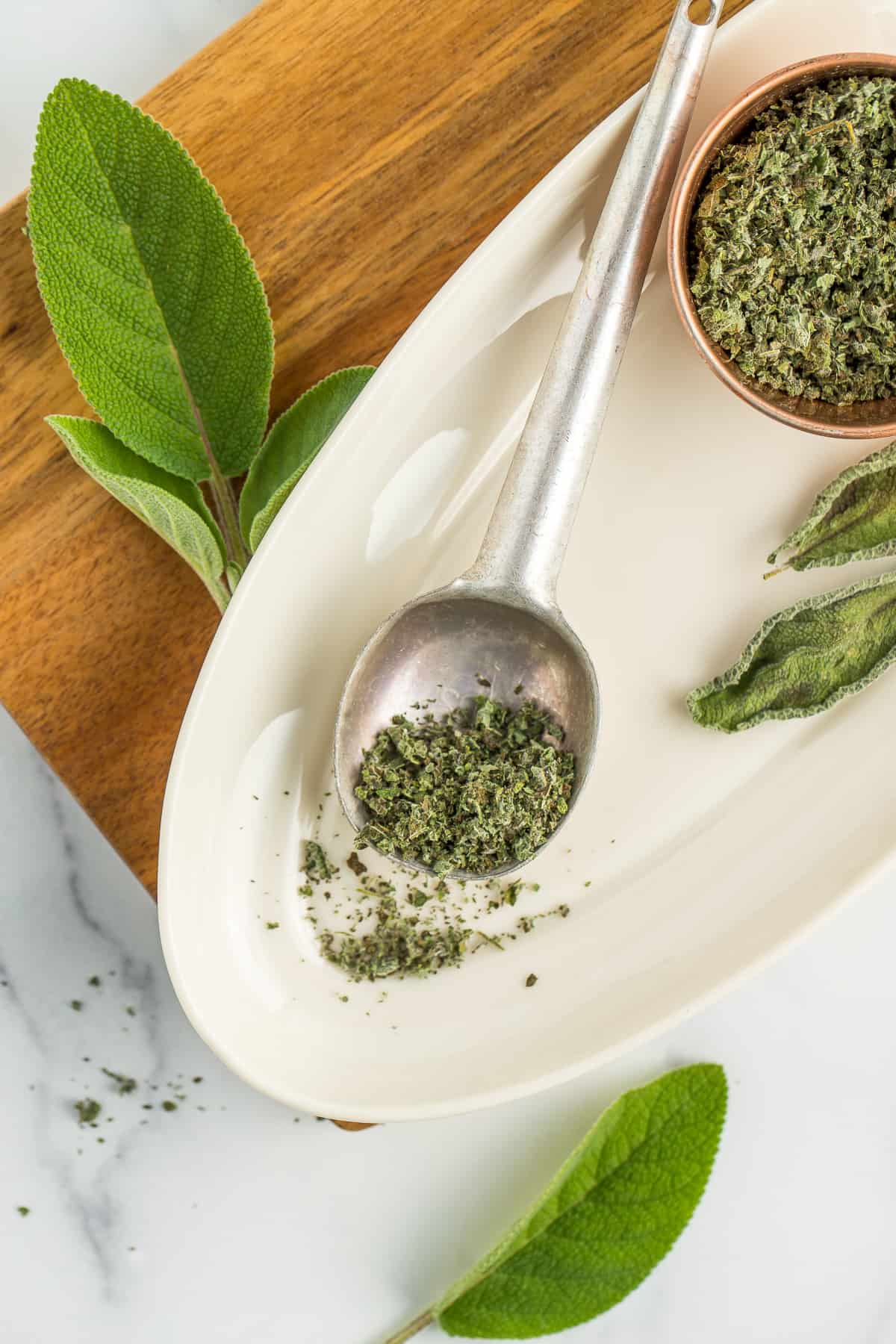
How to Dry Sage
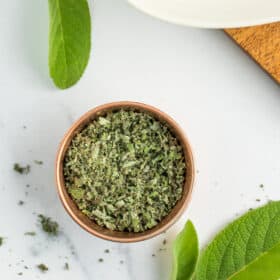
Equipment
Ingredients
- sage leaves
Instructions
How to Dehydrate Sage in a Dehydrator
- Rinse the leaves in a bowl of water.sage leaves
- Carefully dry in a salad spinner or between layers of a tea towel/flour sack.
- Arrange the sage on the drying racks so that the leaves aren’t touching.
- Dry sage at 95F, rotating the trays every few hours.
- The sage is ready when it is dry to the touch and has the consistency of dried leaves (~20-24 hours).
- Allow leaves to fully cool before crushing or storing whole in an air-tight container.
How to Dry Sage in the Oven
- Place clean dry sage leaves on baking drying racks set inside baking sheets. Don't let the leaves overlap or touch.
- Place in the oven at the lowest temperature possible (usually 140-170F degrees) and prop open the door with the handle of a wooden spoon.
- Bake for 3-5 hours. Check every 45 minutes, rotating trays and making sure leaves are not touching.
How to Air Dry Sage
- Suspend small amounts of sage in a paper bag with holes punched in it and close the top of the bag with string, yarn, or a rubber band.
- Hang in a place where it can get air circulation.
- Peek in the bag every few days. Drying times will vary depending on conditions.
Notes
- Make sure the dried sage is fully cooled before putting it into an air-tight container. As the leaves cool they will release heat that could result in condensation and eventually cause it to mold.
- Dried sage will last for a year in a cool dry place.
Nutrition
Nutrition information is automatically calculated, so should only be used as an approximation.



